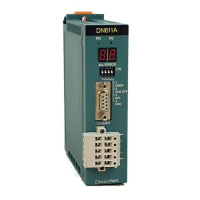98 Ethernet module User’s Manual
Chapter 6 Socket Interface Communication
6
(5) When ending the connection from the EN311, the open request should be issued
after waiting at least 20 seconds to open again with the same port number even the
TCP close request had been completed normally.
If the open request is issued within 20 seconds using the same port number, an error
will occur.
(6) When ending the connection from the EN311, the EN311 that has received the close
request of the S controller waits for the end request (TCP level) on the remote station
side for 15 seconds after sending the end request (FIN) to the remote station.
If there is the end request from the remote station side during the wait time, the
EN311 performs the own-station close processing.
If a timeout occurs, the EN311 also performs the own-station close processing.
(7) If a close request comes from the remote node TCP socket, the local node must also
close the socket. As a technique for checking for the reception of close requests from
the remote TCP socket, user programs should monitor the RCLOSE and CONN bits
in the socket status (see section 6.3, "Socket Interface Information"). RCLOSE is set
to 1 and CONN is set to 0 when a close request is received from the remote TCP
socket.
(8) The EN311 will return an error if send or receive requests is issued in this state. A
receive request in the receive wait state also returns an error. However, the
remaining data will be acquired by issuing a receive request if there is data remained
on the EN311.
(9) When ending the connection form the remote node, the open request should be
issued after waiting at least 10 seconds to open again with the same port number
even the S controller close request had been completed normally.
If the open request is issued within 10 seconds using the same port number, an error
will occur.
(10)The EN311 in the current state does not support a keep alive function for TCP
connections. Verification from the EN311 side to other nodes is not performed.
However, the EN311 does respond to verifications from other nodes. (Responding to
verifications from other nodes is performed independently of user programs.)
Therefore, the disappearance of remote nodes cannot be detected at the TCP level.
We recommend using the detection techniques described in items (11) and (12)
below to detect this condition.
Keep alive function: A function that checks, at the TCP protocol level, whether or not
the connection is operating normally if there has been no activity
over the connection for a certain fixed period.
(11)For a TCP receive request, the EN311 simply waits for data from the remote node. In
situations where data is sent periodically from the remote node, reception wait
timeouts, i.e. no response from the remote node states, can be detected by setting a
reception wait time limit. The following techniques, among others, can be used to
detect no response states when data is sent irregularly.
• Periodic execution of existence verification requests (see section 7.3, "Remote
Station Verification Request").
• The techniques described in the next section, which use a separate TCP connec-
tion
One of the following problems may have occurred when there is no response from
the remote node:
• The remote node may have gone down.
• Power may have been lost.
• The remote and local nodes may have become disconnected from the network.

